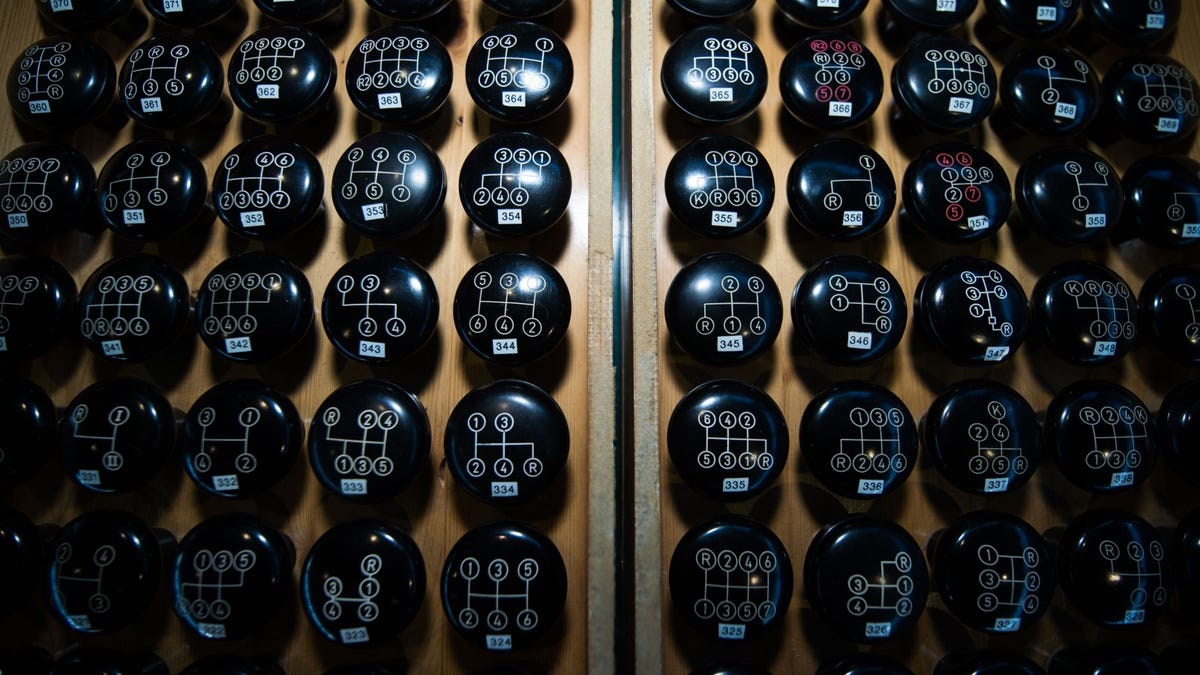Manual cars are a bit of a mystery to most Americans, with less than 20 percent of U.S. drivers capable of driving stick. But even for those familiar with a three-pedaled car, manuals come with their own quirks that you might not yet comprehend, like the weird whining noise they make when you put them in reverse.
You know the sound I mean, it comes whenever you shift from the hearty rumble of your car in its forward gears to the tinny sound it makes when you try to back into a space or reverse up the road. Well the source of this strange sound was brought to my attention by Instagram user Tati Reed, who’s spent the past few months restoring a vintage Land Rover Defender that she’s named Blue Tit.
In one of her recent videos, Reed poses the question to her community, asking why her Landy sounds like a “wasp has been trapped under a glass” when she puts it in reverse. The community responded, and fellow Intagrammer Drive.Science came up with a great demo to show why reverse sounds different to every other gear in a manual ‘box.
Mike from Drive.Science uses Lego to explain that when your gearbox is in reverse there are a couple of things impacting the way it sounds. First, there’s an additional cog at play to reverse the direction of travel, the purpose of which was outlined in this MIT article about how manual gearboxes work:
For the reverse gear there is a small “reverse idler gear” between the countershaft gear and the output shaft gear. This causes the reverse gear to turn the opposite way from the other gears on the output shaft.
More cogs interacting means more friction, which adds an extra level of noise when you’re in reverse, but there’s another reason the sound alters. As well as simply having more cogs for the energy to pass through, the additional idler gear is also a different shape to the other cogs in your gearbox.
Forward gears use helical cut gears, which automakers prefer to use in manual gearboxes because they’re smoother and can withstand more force. Also, rather importantly for this question, they run much quieter.
The reverse gear, however, doesn’t use a helical cut cog and is instead just a straight cut gear. This means that the indentations run across the gear instead of at a jaunty angle.
Straight cut gears are great for this implementation because they can easily slide in between the input and output shaft of your car’s manual gearbox to change the direction. However, they do have disadvantages, as CarThrottle explained in this comparison between straight and helical gearing:
Drawbacks come in the shape of their convenience and operation. They naturally create a hell of a lot of noise; helical gears mesh together in small segments at a time while straight-cut teeth are in contact with each other fully and for a longer period of time which makes for a very distinctive whine. The operation of the gears is also fairly brutal when straight-cut; the gears appear to ‘slam’ into place after each change and can make pulling away smoothly or getting a decent launch difficult.
So, there you have it. That strange noise you hear when you pop your manual car in reverse is because the energy from your car’s engine is passing through an extra gear that’s a different shape to all the others. The more you know.







